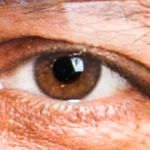- Home
- Photoshop ecosystem
- Discussions
- Re: when i make my image smaller it becomes blurry
- Re: when i make my image smaller it becomes blurry
Copy link to clipboard
Copied
Hi when i make my image smaller it becomes blurry. I am sclaing my image down to 8.5 by 11.3 as you can see it gets blurry after i scale it down.
 1 Correct answer
1 Correct answer
An image is just pixels. How many pixels are you starting with, and how many do you end up with?
In addition to fewer pixels, the resampling itself softens and blurs. There is no way to avoid that. That's why it's common practice to sharpen the result up a little bit.
Explore related tutorials & articles
Copy link to clipboard
Copied
An image is just pixels. How many pixels are you starting with, and how many do you end up with?
In addition to fewer pixels, the resampling itself softens and blurs. There is no way to avoid that. That's why it's common practice to sharpen the result up a little bit.
Copy link to clipboard
Copied
i start with 72 and end with 72 and i tried sharpining the image but it made no difference
Copy link to clipboard
Copied
i start with 72 and end with 72 and i tried sharpining the image but it made no difference
By @Kiran32518984c9x2
Do you mean 72 ppi? That’s only a measure of pixel density, not dimensions. The large image you uploaded is 3042 x 4032 pixels, and the small one is 612 x 816 pixels. So the number of pixels was reduced by 96%, only about 4% of the original detail remains.
That reduction in pixels is necessary to create a small image for a website or email, so there was nothing wrong with reducing it that much. But you want to study best practices for sharpening images for the web or video. This is a common procedure, so there should be tutorials and information about it all over the Internet.
How did you sharpen it? For example, I wouldn’t use Unsharp Mask, I would use the newer Smart Sharpen command that helps protect against unsightly artifacts.
Copy link to clipboard
Copied
i used unsharp mask and it didnt change the appearance so i will try smart sharpen and get back with you
Copy link to clipboard
Copied
When viewed at 100%, it's the larger version that's blurry. The smaller version is sharp, I'd say oversharpened.
To assess sharpness and noise (and other detail) in an image, always view it at 100%, where one image pixel is represented by one screen pixel. This is the only view that gives you a true impression of the image.
Any other view will be inaccurate and misleading because the image has been scaled.
Copy link to clipboard
Copied
As said in all of these suggestions you need to experiment your self to fing optium for your image and applications.
Copy link to clipboard
Copied
Are both versions JPEGs? JPEGs add compression. If you're compressing an already compressed image, then you could be introducing artifacts. You might try scaling down the original image and saving it as a PNG instead.
Copy link to clipboard
Copied
Hi yes i start with 72 and i end with 72
Copy link to clipboard
Copied
Not ppi, that's irrelevant. How many pixels wide by how many pixels high?
Copy link to clipboard
Copied
oh okay i start with 3024 x 4032 then end with 612 x 816
Copy link to clipboard
Copied
okay i will try that, how do i scale down the image?
Copy link to clipboard
Copied
You can scale the entire image by going to Image > Image Size... and adjusting the size with Resample selected.
Then when you save (File > Save a Copy... if you want to keep the original image) and set the Save as type to PNG.
You can also export a PNG. You could go to File > Export > Export As... and set the Format to PNG and adjust the size within the Export As dialog or go to File > Export > Save for Web (Legacy)... and set it to PNG-24 and adjust the Image Size in the Save for Web dialog.
Copy link to clipboard
Copied
In our experience on this forum, and my own with camera club members entering digital images into club competitions, nothing seems to confuse people more than image size and PPI (Pixels Per Inch).
You reduced your image from 3024 pixels wide to 612 pixels wide. We don't know what Resample algorithm you used, (we'll come back to that later).
If we uncheck Resample, and change the Resolution to 300, it still has the same pixel size of 3024 X 816 and is still 34.9Mb, but the linear size has changed so if you were to print the image as it is now, it would produce a smaller print.
When you resample to change the pixel resolution you have a number of options. The default is Automatic where Photoshop decides. I suspect that is what yours was set to, and that Photoshop used Bicubic Sharper
I used Preserve Details 2.0 in the example below, and it gives a much better result.
This compares Preserve Details 2.0 on the left, and Bicubic Sharper on the right zoomed in to 400%
What do you think?
Copy link to clipboard
Copied
i will try that, do you put in 300 resoultion and the preserve 2.0?
Copy link to clipboard
Copied
No. Set Width to Pixels, and the value 612
Resample must be checked (turned on) and set to Preserve Details 2.0
You might be inteerested in trying other options, but I think this one will give the best results.
Copy link to clipboard
Copied
Copy link to clipboard
Copied
How do you look at the pictures? You need to look at them in Photoshop and at 100% (one pixel on the screen is one pixel in the image). For anything else, the image gets recalculated. And you do not have influence on the method used.
Copy link to clipboard
Copied
Good point. It might be to do with the OP's hardware and screen etc. and the way it is displayed. I have copied Kiran's most recent screen shot to Photoshop, and while it looks OK at 100% zoom, I am thinking that it doesn't look quite as good when zoomed well in on my screen. I can't compare without doing it all again, because I lost that document after signing out for another thread.
Copy link to clipboard
Copied
This Problem also happened to me, please resolve it.
Copy link to clipboard
Copied
This Problem also happened to me, please resolve it.
By @Sakharam_Ajagekar7726
There are no magic answers.
There are the original pixel dimensions and the target pixel dimensions.
How you get there is choosing a resampling/interpolation method (algorithm). Some image content with fine repeating patterns detail may benefit from a pre-blur before resampling down to lessen aliasing and a suitable interpolation method. Usually careful sharpening of some description after the resize will help to improve the appearance. This is very much image content dependent and experimentation may be required for best results.
Find more inspiration, events, and resources on the new Adobe Community
Explore Now










